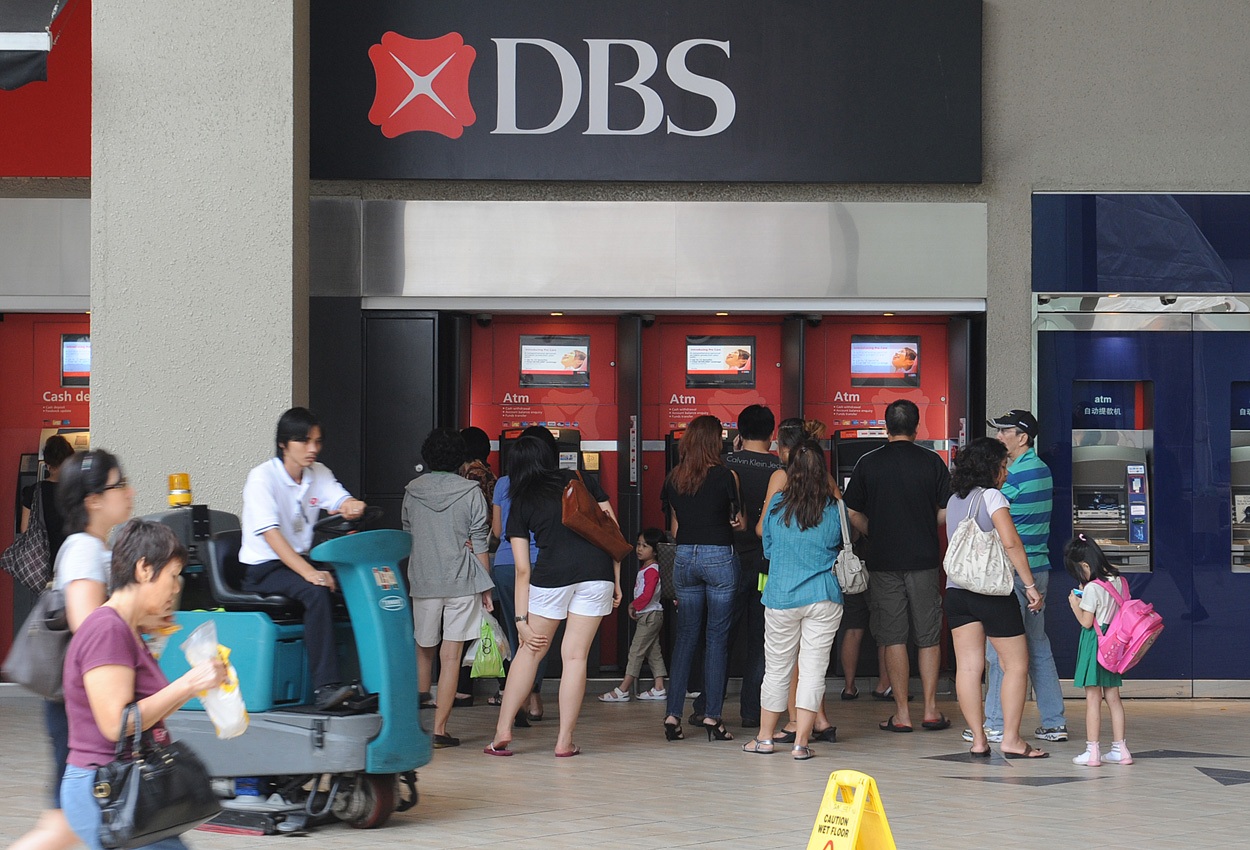The expected mix of tired loan growth and plumper provisions for specific bad debts has come to pass in Singapore banks’ first-quarter results. There is some sense, though, that credit quality worries have been allayed – for this season, at least.
“Our impression of this results season is that credit quality concerns might be overblown for now. The bigger challenge is in revenue generation,” said Kenneth Ng, head of equity research at CIMB Research.
Indeed, the banking trio posted lower earnings from a year ago, reflecting market volatility and weak lending on feeble trade flows. In last month’s macroeconomic review, Singapore’s central bank noted that the impact of weaker external demand broadened in early 2016, reflected by a step-down in exports across most regional economies. Non-performing loan (NPL) ratios rose in all three banks.
To be clear, DBS profit is down at S$1.2 billion, but in the absence of a one-off gain from a property investment a year ago. Excluding the one-time gain of about S$136 million in 2015, DBS’s earnings again hit a record, 6 per cent higher.
And in closing off the earnings session for the banks on Tuesday, DBS cracked analysts’ expectations with a margin boost on its large deposit base, and a surprise boost from fee income, which hit a new high. The new bancassurance fees from its deal with Manulife propped up wealth management contributions. Fee income from its peers, by comparison, was weaker.
Trade loans at DBS contracted sharply by 23 per cent on the back of structural changes in China trade – a big worry among analysts – but the bank’s pivot to grow housing loans helped to cushion the collapse in the China tradebook. All in, lending at DBS was flat. Net interest margin (NIM) gained 16 basis points to 1.85 per cent on higher Singapore-dollar interest rates – now the strongest margin of the lot. DBS has the largest deposit base in Singapore.
CIMB’s Mr Ng also pointed out that DBS’s return on equity stood at 11.9 per cent, which runs ahead of its peers’ roughly 10 per cent. “More fee income, less lending seem to deliver improvements in all the right metrics,” he added.
OCBC found less favour from its bancassurance business. Singapore’s second-largest bank was bruised by poorer contributions from Great Eastern Holdings, on the back of unrealised mark-to-market losses on the insurer’s bond and equity portfolio.
OCBC was also hurt by bad debt allowances, which more than doubled to S$167 million, and warned of deeper stress from oil-related exposure. Overall, its oil-and-gas NPLs totalled S$897 million, or an NPL rate of 0.43 per cent – worsening from 0.39 per cent a quarter ago. To be sure, of the total amount, about 60 per cent of such lending is still being actively serviced.
That OCBC set aside more allowances for specific bad loans – mainly from its oil-and-gas (O&G) exposure – is in line with the industry.
But OCBC also raised its general allowances nearly three-fold – unlike its two peers. DBS did not make new general allowances, saying it had a “healthy level” of S$3.2 billion in general allowances built up. UOB wrote back general allowances on debts, which pulled its total allowances about 30 per cent lower from a year ago to S$117 million.
Credit Suisse analyst Sanjay Jain said in his report that UOB’s writeback was from excess set aside during the global financial crisis for the debt portfolio, which UOB thinks it no longer needs. The same brokerage noted earlier and separately that OCBC has had a lighter provisioning against bad loans than its two local competitors over the last five years.
Correspondingly, OCBC’s net profit fell 14 per cent to S$856 million from a year ago, missing forecasts.
“Despite the earnings miss, we believe the asset quality held up reasonably well,” said Daiwa analyst David Lum, noting that most of the negativity came from weaker-than-expected fee income that includes wealth management, as well as life assurance.
UOB, the first bank to report its results, posted a 4.4 per cent fall in earnings for the first quarter to S$766 million – a result that was in line with market expectations. Costs crept up against flat income growth and higher tax expenses. Bad loans stayed concentrated in the oil-related segment; the bank also added new NPLs mainly from commodity exposures in Canada and Australia relating to the mining industry, analysts said.
While fee income was weak, analysts were stirred by the smaller- than-expected allowances set aside by UOB.
“We believe the reassuring asset quality bodes well for the rest of 2016,” said Daiwa’s Mr Lum.
DBS shares rose 7 cents to S$15.35 on Tuesday. By contrast, OCBC shares fell 17 cents to S$8.60, and UOB shares dropped 20 cents to S$18.40.

This article was first published on May 4, 2016.
Get The Business Times for more stories.






